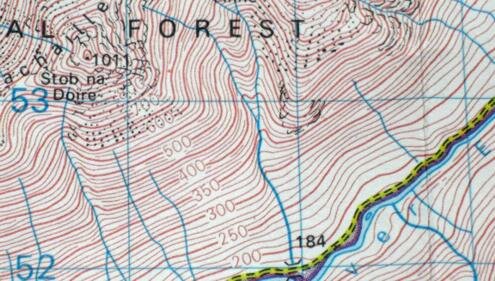Foreword
This website provides a novel, modern approach to classifying the UK’s peaks that is the basis for a new generation of lists for hillwalkers. Included on the site are:
21st Century Peaks Classification
The UK has a rich history of listing hills, starting with the pioneering work of Sir Hugh Munro in the 1891. His list covered summits of 3000 feet and higher but only in Scotland; this restricted the list to the Highlands, Skye and Mull. Subsequent lists covered the hills of England, Wales and Ireland as well as Southern Scotland and the Islands. These lists aimed to fill gaps left by Munros Tables, by either covering different height intervals or being outside Scotland. The end result is that lists are disjointed and there was no overall way of classifying hills in the UK.
The Relative Hills of Britain or Marilyns was the first GB-wide hill list with consistent criteria but includes lower summits that many would not expect to be included in a list of hills. It is also too large a list to be attempted by most walkers, with over 1500 hills.

Reproduced from Ordnance Survey map data by permission of Ordnance Survey, ©Crown copyright.
Another key issue is that since the early 1970s Ordnance Survey maps have been surveyed in metres and contours are at 10 metre intervals with major contours every 50 m (see photo above). Most older lists are based on criteria in feet and therefore do not match modern maps.
Hillwalkers Jim Bloomer and Roddy Urquhart – two UK Metric Association (UKMA) members – have been convinced that there is a need for a new generation of lists with the following characteristics:
- UK-wide coverage including all major areas
- Demanding prominence criterion so that significant peaks are prioritised
- Compatible with modern metric maps
- Focus on peaks above 500m
Jim has built on the work of earlier lists and databases and created the UK Prominent Peaks database. The whole database contains 1564 peaks in the UK and Isle of Man but Jim & Roddy have defined four prominence groups using the 1-2-5 Principle and three height groups, which mean that subsets of the database can be used to create hill lists of a manageable size.
The authors believe that this approach is very much in the spirit of Sir Hugh Munro’s original work because it is based on best available maps and recognises that there are different types of summit. Sir Hugh identified two types of peak, while the UKPP project goes further and classifies into four main groups of peaks.
For hillwalkers who want to create their own challenge, the UKPP database can be customised to create a bespoke challenge. This may be tailored to be as big or as small or as localised as required.
A new hillwalking challenge “Bloomer’s Challenge”, which is based on the database, is described. Bloomer’s Challenge covers the 158 peaks with a prominence of 500 metres or greater (P500+). This includes peaks in all the UK’s upland areas and offers a huge variety of bens, carns, carnedds, fells, hills, mountains, slieves and sgurrs. Apart from people living in South East England or East Anglia, most people in the UK will not live far from a peak on the list.
To illustrate deriving a custom list from the database an example is provided. The “UK Thousanders” is a list of all the UK summits with a height of 1000 metres or more combined with a prominence of 100 metres or more. This list comprises peaks mainly in the Scottish Highlands.
The lists and database can be downloaded in Excel format and have a rich set of supporting resources. The lists are supported by links to map websites including Get-a-Map and Streetmap. Also local area and wide area maps can be viewed using Google Maps or Google Earth.
Using this web site
The website has been designed to accommodate a wide range of interest levels. For a hillwalker who is simply looking for a new challenge across the UK, it is suggested going straight to the Bloomer’s Challenge section. For an individual wishing to create a bespoke challenge then it would make more sense to go to UK Prominent Peaks database
For a hillwalker who is familiar with historic lists and who wants to see how previous ascents fit with the new lists, the UK Prominent Peaks database can be used to track progress. Modifying the database to create a bespoke challenge is described.
Some people are very interested in how lists are created and will want a more detailed account of how the UK Prominent Peaks are defined. Such website visitors will find almost all sections of the site interesting, including definitions and the principles of peak classification.
We hope you enjoy this site. Happy hillwalking!